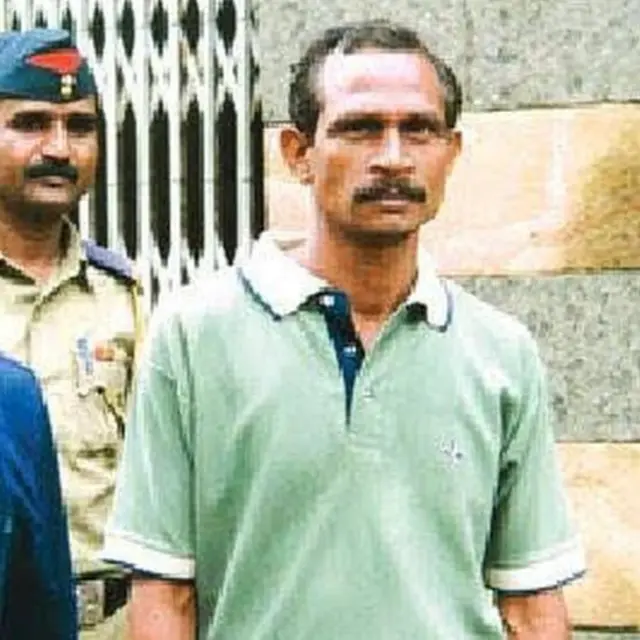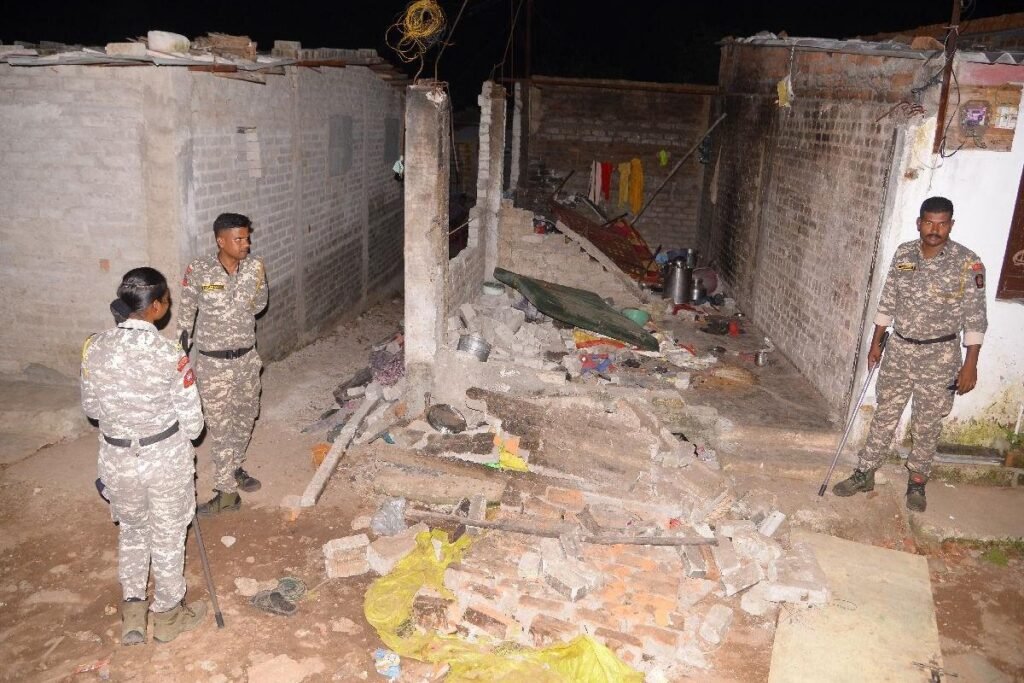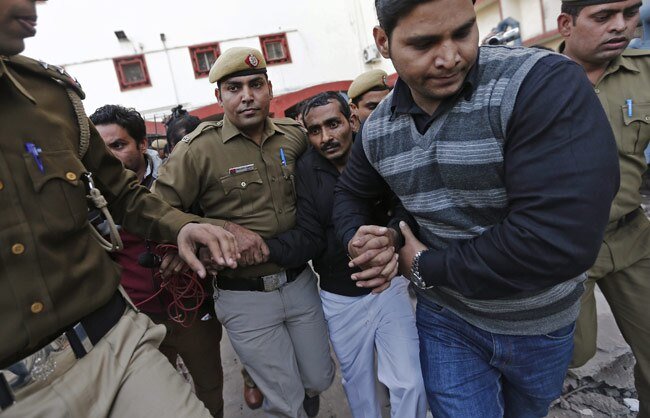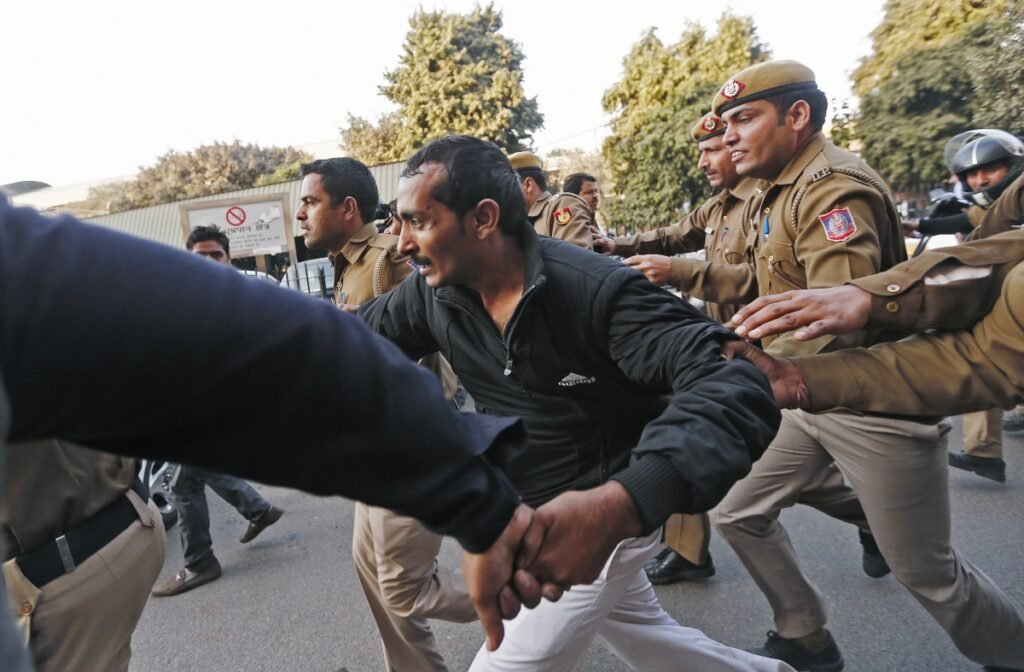Akku Yadav court killing: Imagine a courtroom. The air is thick with tension, the wooden benches are hard, and a judge sits high above everyone else, a symbol of law and order. Now, imagine that room erupting not into legal arguments, but into raw, primal fury. This isn’t a scene from a movie. It was the reality in Nagpur, India, on August 13, 2004. On that day, the sterile silence of the court was shattered by the cries of nearly 200 women.
Their target was one man: a gangster named Akku Yadav. What followed was a brutal and historic act of vengeance that would become infamous as the Akku Yadav court killing. This is the story of how a community, pushed to the absolute brink, decided that if the law wouldn’t give them justice, they would seize it themselves.

This event wasn’t a sudden explosion of anger. It was the final, desperate act in a long and horrifying saga of suffering. To understand why these women did what they did, we must first understand the monster they faced and the broken system that protected him for over a decade.
The Reign of Terror: Who Was Akku Yadav?

In the sprawling city of Nagpur lies a poor, forgotten neighborhood called Kasturba Nagar. It’s a place of narrow, dusty lanes and small, crowded homes, mostly inhabited by the Dalits, India’s most marginalized community. It was here that a boy named Bharat Kalicharan, the son of a local milkman, grew into the terrifying gangster known as Akku Yadav.He didn’t start as a monster.
At first, he was a petty thief, a small-time criminal. But he soon realized that in a place like Kasturba Nagar, fear was a more valuable currency than money. He built a gang and began a reign of terror that would last for thirteen long years.
Akku Yadav’s crimes were not just about profit; they were about power and sadistic control. His gang was involved in everything from extortion to robbery. But his true evil lay in his violence against the people, especially the women.
- Systematic Violence: He was accused of at least three murders and the rape of more than 40 women and girls. Some of his victims were as young as ten.
- A Tool of Intimidation: Rape wasn’t just a crime of passion for him; it was a weapon. He used it to punish families who defied him and to warn others not to step out of line.
- Public Humiliation: His cruelty knew no bounds. He would torture men in front of their families, parade them naked, and burn them with cigarettes, all to crush their spirit.
A System of Fear and Corruption
You might ask, how could one man get away with so much for so long? The answer is simple and tragic: the system failed. Akku Yadav wasn’t just a gangster; he was a master of corruption. He knew that a few well-placed bribes could buy the silence and even the cooperation of the local police.
The very people who were supposed to protect the Kasturba Nagar women became his enablers. When a brave victim went to the police station to file a report, the police would often tip off Akku Yadav. He would then return to exact a terrible revenge on the victim and their family. In one horrifying, well-documented case, a woman who went to report being raped by Yadav was allegedly gang-raped by police officers themselves. The message was clear: there was no one to turn to. There was no hope. This systemic failure is a key reason why the community eventually turned to Indian mob justice.
The Spark of Defiance: One Woman Says “No More”
For years, the people of Kasturba Nagar lived in a state of paralyzing fear. They felt helpless, abandoned by the law and hunted by a predator in their midst. Then, one woman lit a spark that would grow into a raging fire. Her name was Usha Narayane.
Unlike many in her neighborhood, Usha Narayane was educated and had worked outside the slum. She had a sense of the world beyond Kasturba Nagar and a belief that things didn’t have to be this way. When Akku Yadav began terrorizing her neighbors, she refused to cower in fear. She did what no one else dared to do anymore: she went to the police and filed a complaint. indiatvnews
Yadav was furious. He saw her defiance as a direct challenge to his authority. He and his gang surrounded her home, yelling that they would drag her out, disfigure her with acid, rape her, and kill her. But Usha Narayane did not break. In an incredible act of bravery, she locked her door, grabbed a kitchen gas cylinder, and threatened to blow up the entire house, taking him and his gang with her.
Her courage was contagious. Seeing her stand up to the monster they all feared, something shifted in the community. For the first time in years, the residents felt a glimmer of hope. They realized that if they stood together, they were not powerless. The anger that had been simmering beneath the surface for so long began to boil over. United by Usha’s bravery, the community fought back, eventually burning down Yadav’s house. This act forced him to seek police protection, leading to his arrest.

August 13, 2004: The Day Justice Was Served in Blood
His arrest was a small victory, but the people of Kasturba Nagar knew it was likely temporary. Akku Yadav had been arrested many times before, only to be released on bail to continue his reign of terror. On August 13, 2004, he was brought to the Nagpur District Court for a bail hearing. The rumor spread through the slum like wildfire: Akku was going to be set free again.
This was the final straw. The Kasturba Nagar women decided they would not let it happen. They didn’t organize a formal protest. They simply started walking. One by one, then in groups, they headed towards the courthouse. They were armed not with guns, but with the tools of their daily lives: vegetable knives, household spices, and chili powder. They carried stones in their hands. They carried 13 years of pain and rage in their hearts.
The Final Insult
Inside Courtroom No. 7, the scene was set for the final act. Akku Yadav, arrogant and confident, spotted one of his victims in the crowd. He smirked and, in front of the judge and the police, called her a prostitute. He then made a chilling threat, promising that once he was out, he would rape her again. The police officers escorting him reportedly laughed.
That laugh was the spark that ignited the inferno.
The woman he insulted lunged forward and hit him with her sandal—a profound sign of disrespect in India. In that instant, the dam of fear and restraint broke. The courtroom descended into chaos. The Nagpur courtroom incident had begun.
The women swarmed him. They were a wave of pure fury. Chili powder was thrown into his face and at the police, blinding them. They stabbed him with their small knives, over and over. They threw stones at him. The police, overwhelmed and panicked, fled the room. When it was all over, Akku Yadav lay dead on the marble floor, his body bearing more than 70 wounds. The historic Akku Yadav court killing was complete. In a final, symbolic act, his penis was cut off—a brutal message from the women he had violated for so long.

The Aftermath: When “Criminals” Become Heroes
In the stunned silence that followed, a strange thing happened. When the police finally regained control and asked who was responsible, every single woman raised her hand. “Arrest us all,” they said in unison. They took collective responsibility, making it impossible for the police to single out any one person.
The Nagpur courtroom incident became a national sensation. The police did arrest five women, including Usha Narayane, and charged them with murder. But the public tide was overwhelmingly on their side. Lawyers lined up to defend them for free. Human rights activists argued that this wasn’t murder; it was a symptom of a completely failed justice system. The case put a spotlight on the dark reality of Indian mob justice, showing it as an act of desperation, not just mindless violence.
Years later, in 2014, a judge acquitted all the accused women. The court ruled that the police had provided flimsy, contradictory evidence and that their key witness—a policeman who fled the scene—was not credible. It was a legal victory that felt like a moral one, too. The system, in its own way, seemed to acknowledge its failure to protect the Kasturba Nagar women.
A Legacy of Desperation: Understanding Indian Mob Justice
The story of the Akku Yadav court killing is complex. It’s easy to condemn the violence, but it’s impossible to ignore the context. What the Kasturba Nagar women did was illegal, but it was born from a place of absolute necessity. They were victims of a system that had not only ignored their suffering but had actively sided with their tormentor.
Indian mob justice is rarely a first resort. It is the last resort for people who have:
- Lost all faith in the police: When law enforcement is corrupt or indifferent, people feel they have no one to turn to.
- Been failed by the courts: The legal process in India can be incredibly slow and expensive, allowing criminals to exploit loopholes and delay justice for years.
- Faced extreme and relentless violence: When a community lives under constant threat, its survival instincts can override legal norms.
The Nagpur courtroom incident serves as a powerful and chilling reminder that justice is not just an abstract concept written in law books. It is a fundamental human need. When formal systems fail to provide it, sometimes people will find a way to create their own.

Where Are They Now? The Enduring Spirit of Usha Narayane
So what happened to the woman who started it all? Usha Narayane did not fade into obscurity. The ordeal transformed her. She dedicated her life to her community, becoming a social activist. She founded a project to help empower the women of Kasturba Nagar, ensuring they had the support and resources they never had during Akku Yadav’s reign of terror. Her story is a testament to the fact that even in the darkest of circumstances, the human spirit can find the courage not only to survive but to build a better future.
The Akku Yadav court killing will forever remain a controversial and powerful chapter in India’s history. It is a story of a horrific villain, but more importantly, it is a story of 200 ordinary women who became extraordinary heroes in their own right. They are a stark reminder that when the scales of justice are hopelessly broken, sometimes it takes the hands of the people to force them back into balance.

Have you ever imagined that an embarrassing moment in a restaurant could change the face of financial transactions forever? In a critical moment, Frank McNamara realized that forgetting his wallet was the spark that ignited a revolutionary idea: a credit card that would eliminate the need for cash. Discover how this simple idea transformed into an indispensable global system. Visit www.wonderneverends.com to learn more!














